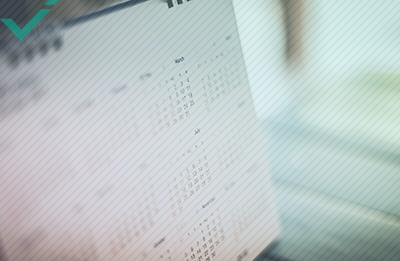THE ORIGINS OF BRAILLE
Despite its prevalence in modern society, text interpreted through braille was not acknowledged by the USA and UK until 1932 and 1905, respectively. While many of us will have come across braille; be it on signs, elevator buttons, medication, everyday food products, and even the new £10 note, the origin of braille is a fascinating one that starts in the early 1800s. Before 1824, there were several attempts to develop a means of communicating without sight; however, the systems proved too complicated to become easily adopted.

BASED ON A SECRET CODE
The common error of over-complication was especially true for night writing, a form of communication requested by Napoleon so that soldiers could receive coded messages at night without speaking and giving away their position. Night writing featured different combinations of twelve raised dots, not six. This approach made even simple letters or words too large to read with one finger. The result was a non-visual means of communication that no one could remember, even the soldiers!
Although night writing was shelved, it formed the basis of a simpler, more efficient system that a young student by the name of Louis Braille would create. His school, the National Institute for Blind Children would quickly come to adopt the system before it slowly but surely became world-renowned. Even more remarkable is Louis was only fifteen at the time, likely unaware of how his creation would change the landscape of communication for partially sighted and blind people on a global scale.
HOW BRAILLE WORKS
We know when and where braille was developed, but how does it work? Early iterations were a like-for-like transliteration of the French alphabet; however, braille is now considered an independent writing system because of the addition of abbreviations, contractions, punctuation, and formatting marks. The most widely used variation of braille is Grade 2 (condensed braille), which includes the more comprehensive aspects listed above. Grade 2 is also the system that both the USA and the UK adopted in the early ‘90s.
Braille is a series of six raised dots with a total combination of 64 variations. The position and number of raised dots denote a letter or word from written language. By passing a finger over the grid, it is possible to feel the embossed dots and interpret their meaning. Punctuation is also accounted for, with readings dependant on whether the marks are included before or after a letter or word. Typically, a standard braille page is 29cm x 28cm; by maintaining consistency with these dimensions, it ensures that the size of the braille text remains the same across the world.
Braille doesn’t just include text either; the system has been developed to incorporate pictures, graphs, lines, and arrows. In fact, since its initial conception by Louis, braille has undergone many amendments to become the modernised variation that we use today.

MODERN TECHNOLOGY IS MAKING LIFE EASIER
Braille, in the traditional sense of embossed dots on specially formatted paper, still plays an integral role in the development of written literacy. However, if you are fortunate to have access to the internet, several programs and machines have been created to make reading and writing significantly easier for partially sighted or blind individuals.
Software exists that can provide an audio description of website content, while braille machines offer a refreshable display so braille readers can interpret online information at any time. Even smartphones now have braille apps to provide audio commands and readouts, further supporting those with impaired vision. For those interested in learning braille or having some of their work translated, braille translation software transforms traditional written text in seconds. It is then possible to download the image to be embossed onto conventional braille paper. The following phrase, “I love Yuqo!” translates to:
⠠⠊⠀⠇⠕⠧⠑⠀⠠⠽⠥⠟⠕⠖
Many websites can also be used for interpreting braille, making it a valuable tool in schools and educational establishments. Why not try the service for yourself to better understand braille—you never know when you might need it.
THE NEED FOR BRAILLE STILL EXISTS
In truth, advances in technology have made it easier to communicate; however, the need for braille is still relevant, even in a world dominated by convenience. Braille allows partially sighted or blind people to communicate with the same efficacy and quality that we often take for granted. It provides access to a world of information and teaches valuable literacy skills without hindering their ability to learn. Technology’s most significant advantage is it enables greater exposure to braille for all parties, and thus keeps the vital, purpose-built communication system alive.


